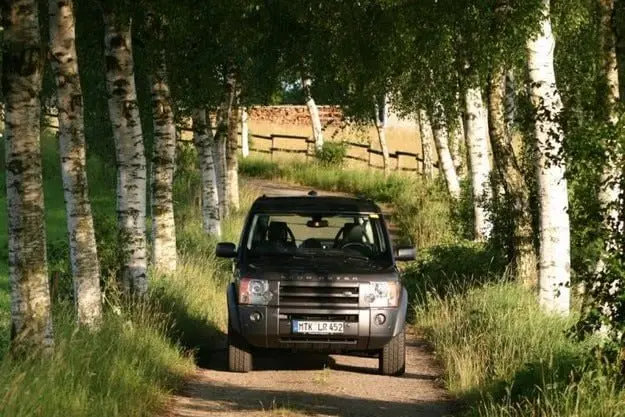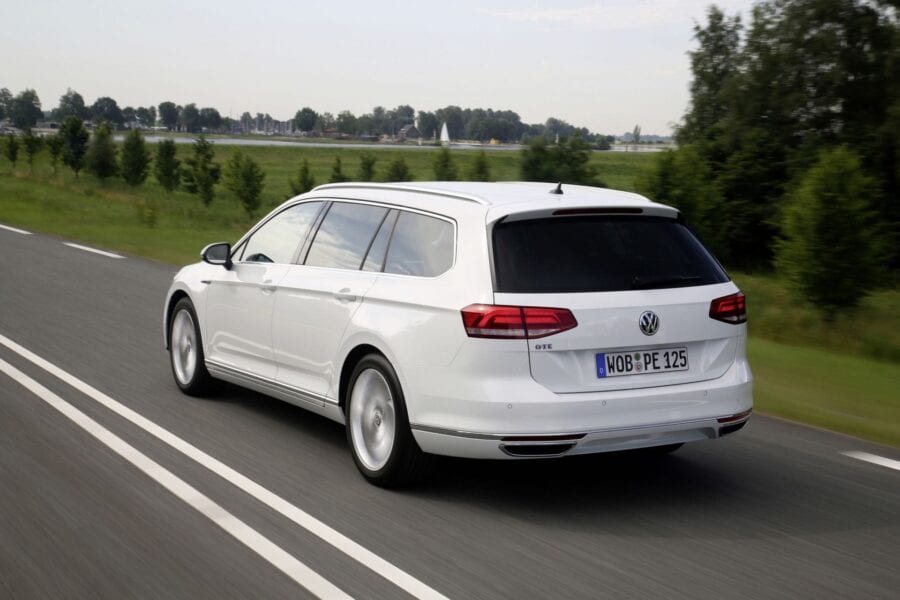
Test drive Land Rover Discovery TDV6: British nobleman
Content

There is hardly another car in the SUV segment that could be so easily defined as classic. The Land Rover Discovery / TDV6 diesel combination is welcome, but the marathon test has shown that there are some problems with both.
Senior turtle drivers may remember that in the past, anyone who managed to drive 100 km in the legendary air-cooled car received a gold watch from Volkswagen.
Nowadays, such gestures are outdated - the standard hundred thousand kilometers of an auto motor und sport marathon test are easily overcome by modern vehicles, and the times when exhausted cars remained on the road with serious damage are long gone. What's more, at the end of the test, prestigious models such as the Land Rover Discovery are in excellent overall condition, which in no way betrays the harsh testing conditions with constantly changing rails and minimal cosmetic maintenance.
No wrinkles
In a word, after 100 km of run, a large SUV looks like new. One basic cleaning and paint freshening is all it takes to give interior upholstery and carpeting a look that will surprise every aftermarket buyer. The only damage is a few small scratches on the plastic surfaces from heavy use on the Discovery and the lightly polished leather steering wheel. The doors continue to close with the heavy sound of a bank vault door, and neither the bodywork nor the interior hardware makes any rattling or squeaking noises when driving on bad roads.
Discovery has proven itself to be a reliable companion in everyday life, designed with the obvious goal of long and faithful service to its owner. The huge weight of the car emphasizes this fact - although for the younger brother of the Range Rover, the Discovery weighs exactly the same. During intense discussions about fuel consumption, such weightlifters may have additional questions, and this is one of the reasons Land Rover discontinued the petrol V8.
Diesel change
The only engine the SUV is now available with is a V6 diesel, which better suits its character anyway. The average fuel consumption over the entire distance was 12,6 l / 100 km, which, taking into account the transport capabilities of the car, is within reasonable limits. However, data indicating an outstanding 10 l / 100 km can also be found in the logbook. Such a low cost is achieved when the big Disco floats in its own waters, moving at speeds from 140 to 160 km / h. Then the engine hums pleasantly, and neither he nor the passengers feel stress.
Higher speeds can, of course, be reached, but constantly squeezing out the maximum engine power at a fuel consumption of up to 16 l / 100 km negatively affects the driving pleasure.
Asphalt dynamics is not a Land Rover's strength at all, but owners have learned to appreciate the calming effect of an SUV built in the spirit of classic British tradition. Diesel is definitely not one of the engines that are impressive in their characteristics and noticeably "thinks" when starting, but against the background of a calm and pleasant ride, these shortcomings remain in the background.
This is confirmed by the fact that during the entire marathon test there were no complaints about the manners of the diesel V6. Its acoustics are somewhat noticeable when driving at low speeds, but the sound of the bike is lost on the track. The six-speed automatic transmission, which shifts gears smoothly and discreetly, also contributes positively to the comfort of the transmission. During the test, neither the engine nor the transmission showed any problems such as malfunctions or oil leaks. At the end of the race, the six-cylinder unit performed very well, which was underlined by the improvement in performance measured in the test. The rest of the powertrain passed the test with almost no problems.
Time does not forgive
Shortly before the end, the front axle differential howled. The reason for this was the appearance of a slight asynchrony in the interaction of gears, which does not lead to faster wear, and, according to technicians, the differential will last thousands of kilometers. Since retuning gears is a difficult task, the service made a modern decision to replace the differential with a new one. If it were not covered by the guarantee, this operation would have cost 815 euros.
While it looks more conservatively British, the Discovery is literally packed with electronics that governs various off-road programs and air suspension modes. Against this backdrop, recurring software changes made during scheduled service visits are just part of today's reality. One of the really necessary changes in this direction resulted in improved performance of the navigation system, but its menus remained unnecessarily complex.
The car's electronics created the biggest headache during the marathon test. Even at 19 km, the dashboard display read “Suspension error - max. 202 km/h". Initially, this error was fixed by restarting the engine, but later it turned out that the problem would remind you a few more times. Unfortunately, he did not show up for the inspection at the service station. An error could sometimes appear after 50 km or not remind of itself at all. Of course, driving was possible with a 300 km/h top speed warning on the dash, but this warning was not accidental - in cases where the complexly connected suspension electronics stop working, the Terrain Response system programs are disabled and the air suspension goes into emergency mode. in which a heavy body begins to sway in turns, like a small ship in a rough sea.
Problems accompanied the daily life of the car up to 59 kilometers, when the culprit was identified in the person of the air suspension level sensor. Unfortunately, the service center initially replaced only the left sensor, but the right one was also faulty. After 448 kilometers, it was his turn and since then by the end of the test there have been no more problems with the suspension.
Rabotokholikt
Therefore, here we can devote a few good words to its positive characteristics. With electronics that automatically do what only experienced off-road drivers can do—apply more or less torque to the wheels or lock the center and rear differentials when needed—Discovery has earned its reputation as an off-road master. Variable ground clearance and long suspension travel, which allow for excellent ground traction, are exceptional advantages in this area.
Those who were not tempted by off-road adventures, in turn, were impressed by the car's ability to pull trailers impressive in terms of volume and weight. Discovery can carry a trailer weighing up to 3,5 tonnes, and conventional caravans are no problem with the adjustable rear axle suspension level.
If towing trailers isn't your thing either, the superior suspension comfort is sure to impress. His qualities were appreciated even by representatives of the "speed" faction in our editorial office. Long journeys in this vehicle are especially enjoyable when you get into the comfortable seats, let the air conditioner operate with its inherent invisibility and efficiency, and forget about taking care of the luggage that is wasted in Discovery's nearly bottomless cargo hold.
Small but well-thought-out details such as numerous compartments for small items in the passenger compartment, stable cargo hooks in the trunk and excellent lighting provide additional comfort while traveling. We do not recommend using the auto light off function, which is only activated when the end of the tunnel becomes visible ...
At the end of
Speaking of criticism, two more not very pleasant details should be noted. The split tailgate is ideal for a picnic, but it gets in the way of loading heavy luggage and can get you dirty. The heated windshield eliminates the morning ice scratching that shouldn't be underestimated in such a tall car, but the thin wires reflect the lights of oncoming cars and obstruct visibility, especially in rainy weather.
The logbook of the marathon test participant also noted a problem with the front left door closing mechanism, as well as a faulty tank cap, which would not cause such headaches if the central locking lever were periodically lubricated with grease. time. This was the reason for the second of three unforeseen business visits.
Despite all these minor problems, the test Land Rover performed very well in the damage index. So far, only the Hyundai Tucson can boast a better result, but compared to the electronic giant Discovery, it is at a much lower technological level. In the end, the British SUV passed the EuroEuro 4 exhaust test, a standard that all Discovery versions registered after September 2006 meet. Unfortunately, our marathon model was not equipped with a particulate filter. But, as an English nobleman would say, no one is perfect ...
Evaluation
Land Rover Discovery TDV6
Land Rover Discovery visited service three times out of schedule but never once intervened for roadside assistance. In terms of overall balance, the car outperforms such respected models as the Mercedes ML and Volvo XC 90.
technical details
| Land Rover Discovery TDV6 | |
|---|---|
| Working volume | - |
| Power | 190 k. From. at 4000 rpm |
| Maximum torque | - |
| Acceleration 0-100 km / h | 12,2 s. |
| Braking distances at a speed of 100 km / h | - |
| full speed | 183 km / h |
| Average consumption fuel in the test | 12,6 l |
| Base Price | - |
